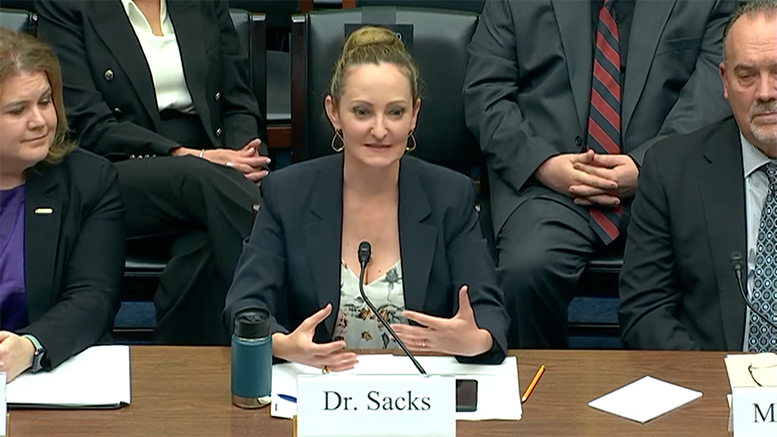The jobs are there, as are the programs to train workers for those middle- and high-skill jobs. But there’s only a trickle of skilled workers entering the workforce development pipeline.
A House Oversight and Accountability subcommittee on Wednesday discussed how to draw more youth into exploring vocational career options through career and technical education, apprenticeships and other work-based learning models.
Casey Sacks, president of BridgeValley Community and Technical College in Charleston, West Virginia, said Congress could help workforce development providers by giving more flexibility in how they can use federal funding.
“I would ask Congress to block grant as many things as you can to states,” said Sacks, a former deputy assistant secretary for community colleges at the U.S. Education Department and former vice chancellor for the West Virginia Community and Technical College System. “Let us decide how we want to address our workforce needs. The less bureaucracy, truly the better.”
Sacks noted the push among many community colleges and other workforce advocates to expand Pell Grant eligibility to cover short-term workforce education programs. But she observed that the Workforce Innovation and Opportunity Act (WIOA) already provides vouchers known as individual training accounts (ITAs) that would cover those programs.
“ITAs pay for what essentially short-term Pell would be, but it’s a lot more burdensome,” she said.
Sacks noted that workforce development providers have to weave through a web of rules and regulations to get funds for learners. It would be easier to complete a federal student aid application to attain a Pell Grant, she said.
Sacks explained that providers not only navigate through workforce system rules, but they also have to negotiate other federal programs like SNAP and TANF to find funds that learners can use for training and education — and that’s not an easy task.
Fewer voc ed opportunities
Paul Winfree, president and CEO of the Economic Policy Innovation Center, told lawmakers that there simply are fewer opportunities in K-12 for students to explore vocational education. In the 1970s, nearly half of the student population was taking voc ed, he said. Since the early-1980s, it has declined to less than 20% as K-12 schools shifted to mainly focus on preparing students for four-year colleges.
Meanwhile, European countries such as Austria, Denmark, Germany, Norway and Switzerland all have apprenticeship programs that are incorporated into general education, Winfree said.
“They are so critical to those models that have been tried in other countries that we honestly should learn from,” he said.
Winfree noted that younger adults (ages 20 to 24) in the U.S. have been slow to join the labor market after the economy began to recover after the Covid pandemic. They also are not going to college at higher rates despite not working, he said. Apprenticeships can provide an appealing path for those youth to return to the workforce while earning while they learn, he added.
Members of the Subcommittee on Economic Growth, Energy Policy and Regulatory Affairs agreed that stakeholders need to find ways to connect potential workers to sectors that desperately need employees.
“Part of the challenge that we face is to figure out how to incentivize more of our young people to go into the specific areas that are matched with where our economy can grow,” said Rep. Melanie Stansbury (D-New Mexico).
Working with employers, K-12
Despite the challenges, there are several promising practices across the U.S. to engage younger students in exploring options through career and technical education. This fall, for example, BridgeValley Community and Technical College welcomed its inaugural class of the WIN Academy (Workforce Initiative for Nurses) — a charter school model that integrates classroom education with practical education for high school juniors and seniors, Sacks said. Graduates will earn both their high school diploma and an associate degree in nursing in just three years. The academy is modeled after programs in Florida (Indian River State College’s Clark Advanced Learning Center and St. Petersburg Collegiate High Schools), Ohio (Lorain Preparatory High School) and North Carolina (Wake Tech Early Colleges), Sacks said in her written testimony.
BridgeValley also has joined the Aspiring Nurse Program, a formal partnership between hospitals within WVU Health System and students at partnering schools of nursing. Unlike a scholarship, students in the program receive financial assistance to help with life expenses while in nursing school.
While in most cases tuition support already exists for these students in terms of grants, loans and scholarships, the Aspiring Nurse Program provides nursing students at BridgeValley with up to $25,000 to support their life expenses. Sacks explained that students in the program receive $5,000 for each of the four semesters they are in school, plus a $5,000 sign-on bonus upon hire in exchange for a three-year work commitment with their training hospital after graduation. WIN Academy students are eligible for this program, too.
Sacks said it is critical to let employers know of the challenges that many community college students face, noting that many are just one flat tire away from dropping out. Employers that recognize these are potential skilled workers may invest through scholarships and other ways to keep students on track, she said.
Revamping funding models
Rep. Russell Fry (R-South Carolina) asked the panel how states could remodel funding structures to better support pre-apprenticeships, apprenticeships and similar programs. Sacks said it starts with what employers want, which should be the foundation of their state’s WIOA plans.
“Unfortunately, many of those state plans are grounded in federal compliance instead of really thinking about how to meet local labor market demands,” she said.
In addition, colleges can improve on educating students about available jobs in local industries and their potential for higher incomes. Seeing that they can earn $30,000 more at a different local job can be an incentive for many students, Sack said.
“We really want to set our students up for success, and looking at these labor market outcomes makes a really big difference,” she said.

